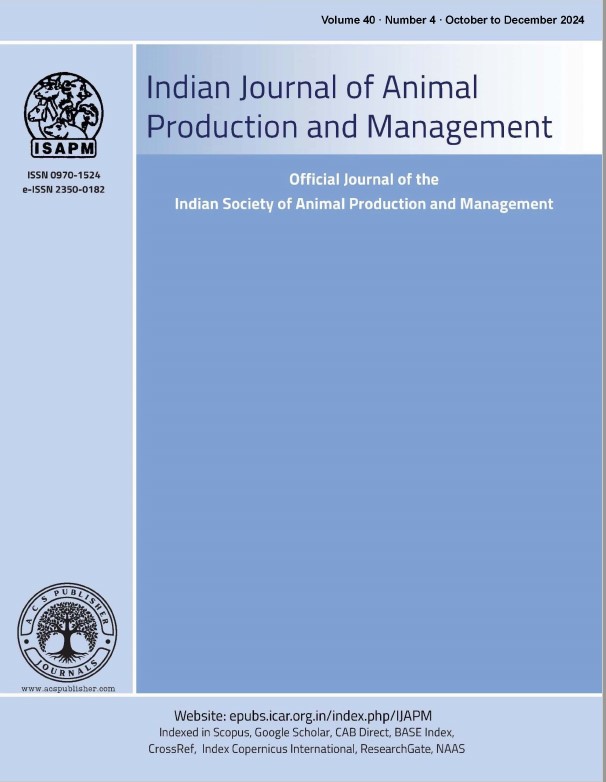ESTRUS SYNCHRONIZATION RESPONSE AND CONCEPTION RATE FOLLOWING IVS AND FIXED TIME INSEMINATION IN GOAT
Keywords:
Estrus synchronization response, conception rate, goat, IVSAbstract
The study was conducted to design Intravaginal sponge(IVS) and speculum suitable for Assam local goats (and its crossbreds), to study the relative estrus synchronization response to three different progesterone concentrations followed by PMSG administration and the conception rate following artificial insemination (AI). A total of 24(twenty four) normal cyclic adult non-pregnant female goats maintained at Goat Research Station, Assam Agricultural University, Byrnihat, constituted the experimental animals. The animals were divided into four groups viz, group A0, A1, A2 and A3 with six animals in each group. Animals of group A0 (control group) received 0 mg progesterone and A1, A2 and A3 groups received 100, 200 and 300 mg Progesterone Impregnated Intravaginal Sponge and kept in situ for 14 days followed by administration of 200 IU PMSG I/M on the day of Progesterone Impregnated Intravaginal Sponge removal. Artificial insemination was done after 12 hours from the onset of estrus. Blood samples were collected from each of the animals on 0, 7, 14, 15, 16, 26, 36, 46, 56, 66 and 76 days. A 100 per cent synchronized estrus was recorded in the three treatment groups and natural estrus of 16.66 per cent in the control group (A0). A conception rate of 83.33 percent was recorded in the does of A1, A2 and A3 groups after Artificial insemination but there was no conception in the animals of control group A0. The serum progesterone profile at the start of the study was 1.197±0.05, 1.23±0.03, 1.24±0.04 and 1.28±0.04 ng/ml in A0, A1, A2 and A3 groups respectively and at the 14th day ie., removal of the Progesterone Impregnated Intravaginal Sponge was 1.453±0.10, 3.17±0.04, 3.88±0.02 and 4.66±0.05 ng/ml in A0, A1, A2 and A3 groups respectively. On the day of estrus the progesterone profile at day 1 observation following AI in pregnant does was 0.25±0.01, 0.27±0.01 and 0.36±0.02 ng/ml in A1, A2 and A3 groups whereas, it was 1.17±0.18, 0.62, 0.248 ,and 0.317 ng/ml in non-pregnant goats of A0, A1, A2 and A3 groups respectively. At pregnancy, ie., 60 days, the level of serum progesterone was 6.00±0.37, 7.01±0.09 and 7.59±0.14 ng/ml in A1, A2 and A3 groups which showed an increasing trend from the day of estrus whereas, in non-pregnant animals, it was 1.24±0.15, 0.997, 0.967 and 0.897 ng/ml in A0, A1, A2 and A3 groups respectively at 60 days of observation. The study revealed IVS treatment effective in estrus synchronization.

